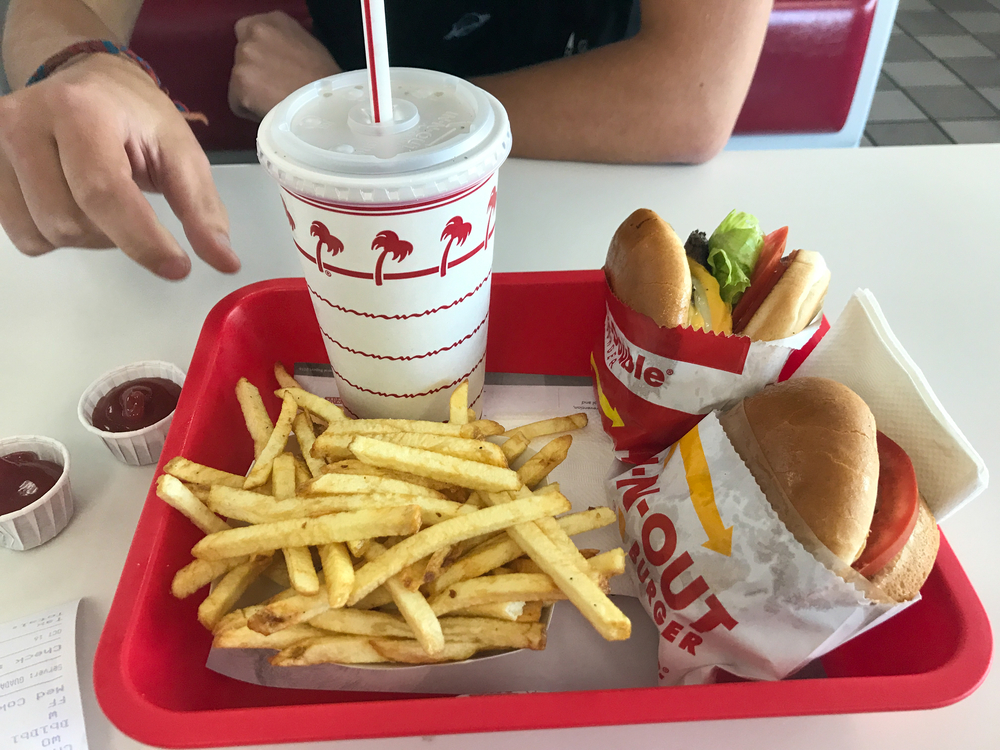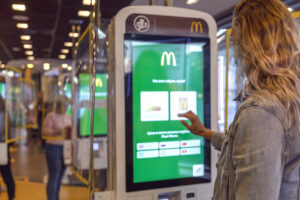California Dreaming: The Effects of California's "Fast Food" Minimum Wage
By Richard B. McKenzie


The governor and the legislative backers of the wage hike might have reasoned that the limited mandate would force other, higher-level restaurants (fast casual and casual dining, like Applebee’s, Islands, and Panera’s) and even stores with low-wage workers (such as Dollar General) to match the mandated fast-food minimum. Why? Because if they didn’t match the new minimum, their workers making less than $20 an hour could be enticed to move to covered fast-food restaurants for higher pay.
But the backers would be wrong.
Prior Measured Effects of Minimum-Wage Increases
As a multitude of academic studies have shown,1 a minimum wage increase for fast food (especially as high as this one with unprecedented narrow market coverage) will far more likely cause covered restaurants to cut their workforces, either by laying off workers or reducing their hours. This means that even workers who keep their low-wage jobs but get fewer hours could be induced to move to non-covered jobs with more hours in higher-level restaurants. (A wage of $16 an hour on a forty-hour workweek would generate $640 in gross pay; a $20 hourly rate with only 25 hours a week would yield a weekly pay of $500, a 22 percent reduction.)
Of course, fast-food restaurants would cherry-pick among their workers, laying off a disproportionate number of their lower-skilled/low-productivity workers. However, note that any reduction in fast-food employment could transmute into an increase in worker supply for uncovered, higher-level restaurants, with the supply increase putting downward pressure on their workers’ wages and benefits—a market effect that wage-hike backers likely haven’t considered.
Again, those restaurants will also cherry-pick among new applicants, choosing a disproportionate count of the relatively lower-skilled/low-productivity workers they interview. This means that the lowest of the low-skill/low-productivity workers will suffer most in terms of ending up on the unemployment lines, perhaps not exactly what backers expected.
Lost Fringes and Geater Work Demands
The political supporters, who surely know the findings of the minimum-wage studies, might object vociferously: “Most past statistical studies on minimum-wage hikes have found meager percentage reductions in employment in covered worker groups (generally, lower than 3 percent of covered workers) and hours worked.” They would be right, for the literature they’ve reviewed. Yet they overlook how employers are not fools, unable to recognize and use other ways of legally responding to government mandates, with the intent of offsetting partially, if not totally, the labor-cost increases from money wage-rate hikes.
Employers know very well that the mandated money-wage increase is hardly the only way workers are compensated, and may not even be the most important form of compensation (on the margin) for some, or even a few, covered workers (especially those with children who need flexible schedules).
Employers also face competitive market pressures to control their labor costs and advance their profits in financial markets. Employers who don’t respond to minimum-wage mandates by cutting their labor costs (perhaps because they want to be “nice” to their workers) can be left behind with relatively higher production costs, and with higher prices and lower sales than those who do make the cuts. The extant competition can force all competitors to respond even when they would prefer not to do so.
Faced with an above-market minimum wage, employers will be pressed to offset the money-wage hike with savings in labor costs that can come with replacement of covered workers by uncovered “non-human workers”—kiosk order takers and “burger bots.” These “tech workers” have an enviable market-wage advantage over their human competitors: Their legal California minimum wage is hard to beat: $0.00!
Employers can also reduce or eliminate whatever (minimal) fringe benefits they offer their workers, such as flexible scheduling, hours off for taking college classes, and even limited health benefits. Employers who have no fringes to trim can always increase work demands. Employers can do that because of work opportunities reduced by the minimum-wage hikes. Indeed, when fast-food restaurants cut their workforces, many will be pressed to transfer some or all of the lost workers’ tasks to the remaining workers. And many of the lost benefits will never be recognized by government minimum-wage monitors.
Why Job Losses to Minimum-Wage Hikes Have Been “Small”
The lost worker benefits unseen by minimum-wage backers is one reason reformers perennially claim that fast-food workers are poorly compensated and why minimum-wage hikes seem to be an ineffective policy for raising covered workers out of “poverty,” as one of my UC-Irvine economist colleagues David Neumark has argued in the Wall Street Journal.2 Another unheralded reason is that a wage hike for poor workers who are on several welfare programs can mean a loss of more in welfare benefits than they can gain from a higher minimum wage.
Why? For a simple, but obscure reason. Most welfare program benefits are reduced as covered workers’ earnings rise, as economist Craig Richardson and I have shown,3 leaving covered minimum-wage workers facing higher marginal tax rates that are higher than the marginal income tax rates paid by the rich—even higher than 100 percent (which means that some covered minimum-wage California workers on welfare will lose more in benefits than the money they gain from the $4 increase in their minimum wage), an unseen consequence that hardly their incentives to continue working.
Why Past Minimum-Wage Hikes Have Been So “Small”
Apparently, hike backers also haven’t realized that the reported “small” employment effects of past wage hikes have been largely attributable to how small the hikes have been (10 percent or so, sometimes spread over years) and how easy it has been for employers to offset their low increase in wage costs with reductions in fringes and increases in work demands—as well as with price increases and replacement of unskilled workers with more skilled (productive) workers.
Because California’s minimum-wage hike is so large this time (and has not been gradually increased), employers could quickly run out of ways to develop offsets for the $4 wage increase, which means that the 25 percent minimum-wage increase can be expected to disproportionately magnify its employment effect (far beyond the “small” percentage effects reported in almost all previous statistical studies). California could be conducting a social experiment in poverty relief that could very well spark backer-remorse and reduce backers in other states enthusiasm for minimum-wage hikes.
Why Covered Workers Who Keep their Jobs Can Be Made Worse Off Than the Workers Who Leave
Typically, economists’ arguments for and against minimum-wage hikes lead to an often-touted conclusion, that workers who keep their jobs are made better off by hikes, while those who are let go are made worse off, because they must accept unemployment or lower-paying jobs uncovered by the hikes. That facile deduction, adamantly supported for decades, is also likely wrongheaded. My explanation is straightforward: When employers offer workers fringe benefits, they likely expect their costs to be covered either by an increase in worker productivity and/or lower wages (brought on by an increase in the number of potential workers). This means that when benefits are reduced because of wage hikes, the value of workers’ lost fringes (say, $5, only as an illustration) will tend to be worth more than their minimum-wage increase ($4 an hour, in the California case). It also means that firm profits will be higher than without the non-wage benefit adjustments.
Doubt that covered workers will suffer non-money-wage effects, often in unseen ways? A bartender at a local casual dining restaurant recently reported his restaurant just hired two employees whose hours were cut at a Chipotle (after Apri1) in the same shopping center, giving his restaurant a chance to expand business in the tight Orange County labor market without having to increase its starting wage. A manager at a local Chick-fil-A has reported that her company has matched the mandated $4 wage increase, keeping its starting wage $1 above the state’s required $20 minimum, but has changed its standards for annual raises; instead of basing raises on both tenure and responsibilities, it now offers higher wages only for increased responsibilities.
The result is that a forced minimum-wage hike will negate many mutually beneficial market trades, making many workers worse off on net: The workers may receive a higher money wage, but will tend to lose benefits and must meet greater work demands. The very workers this legislation was supposed to help will, with time, tend to be net losers.
Concluding Comments
Members of Congress seem to have gotten economists’ message. The federal minimum-wage of $7.25 has not been raised since 2009. The federal real minimum has, as a consequence, deteriorated by 40 percent since 2009.
Yet that real-wage reality doesn’t mean that workers covered only by the federal minimum are worse off today. The market minimum wage in most states has continued to rise. Even if California had no state minimum today, no firm in the state could get by with paying the federal minimum, as evident by the fact that many firms, including fast-food restaurants, were paying above the state’s $16 minimum before April 1, and some restaurants were even paying more than $20 an hour, and with more worker benefits than years ago.
- Minimum Wages, by Linda Gorman. Concise Encyclopedia of Economics.
- “Progressives’ Desires to Help the Poor Will End Up Hurting Them Instead,” by Craig J. Richardson and Richard B. McKenzie. Library of Economics and Liberty, Sep. 6, 2021.
 Jacob Vigdor on the Seattle Minimum Wage. EconTalk.
Jacob Vigdor on the Seattle Minimum Wage. EconTalk.- “Large Increases in the Minimum Wage Are Likely to Destroy Jobs,” by Robert P. Murphy. Library of Economics and Liberty, Oct. 5, 2015.
Nevertheless, many state politicians continue to favor minimum-wage increases. The reasons are not as clear as may be thought: “Politicians want to help poor workers” or “They have simply not appreciated the economics of the minimum wage in competitive markets.” These are not inconsequential points, but they seem too obvious and facile for my academic proclivities. I am inclined to believe that both proponents and opponents of minimum-wage hikes find the political forces behind minimum-wage hikes more powerful than the economic forces. But that is hardly a comfortable admission.
Footnotes
[1] See for example “On the Minimum Wage, Both Sides Have Their Economics Wrong,” by Richard B. McKenzie in Regulation. Summer, 2021.
[2] David Neumark, “California’s Crazy ‘Fast Food’ Minimum Wage Takes Effect,” Wall Street Journal, March 31, 2024. Paywalled.
[3] Craig J. Richardson and Richard B. McKenzie, “Progressives’ Desire to Help the Poor Will End Up Hurting Them Instead.” Library of Economics and Liberty, September 6, 2021.
*Richard McKenzie is a professor of economics emeritus in the Merage Business School at the University of California, Irvine. He is also author most recently of Reality Is Tricky: Contrarian Arguments on Contested Economic Issue and a soon-to-be-released book (June 2024) on Rationality Evolved! Why We Have No Choice Over Having Choices.
For more articles by Richard B. McKenzie, see the Archive.
